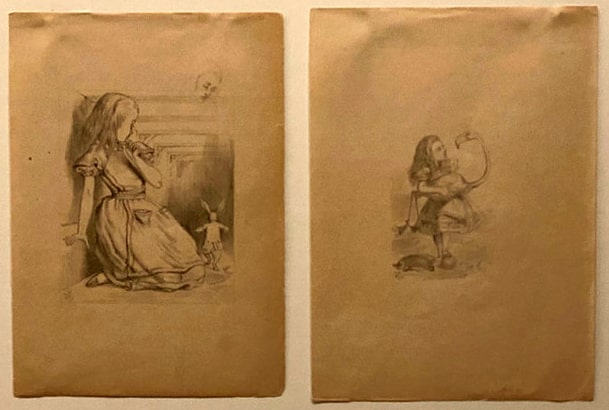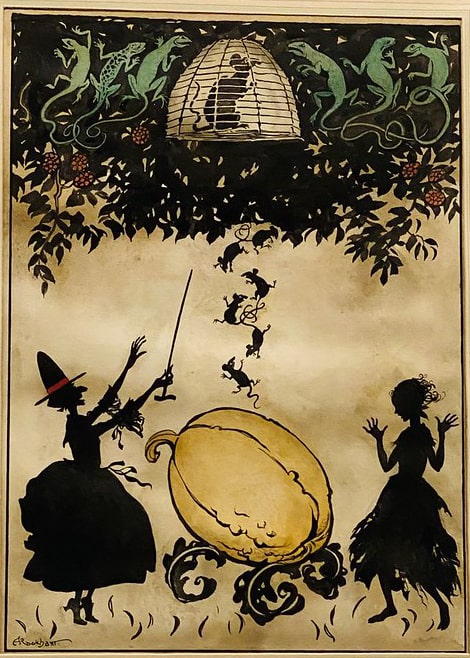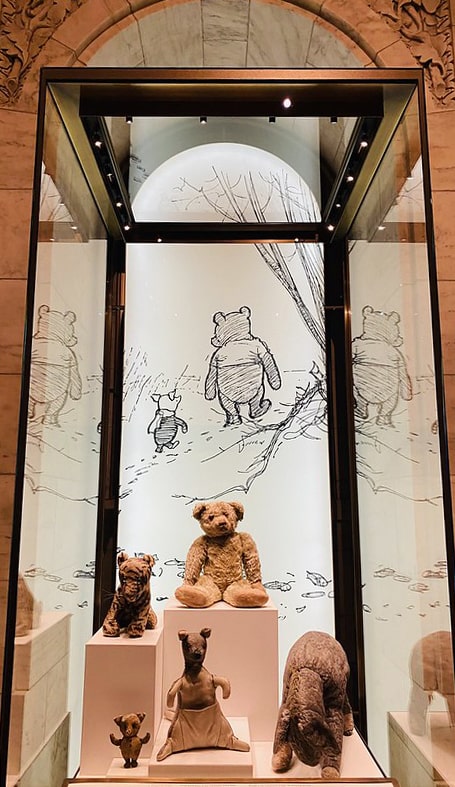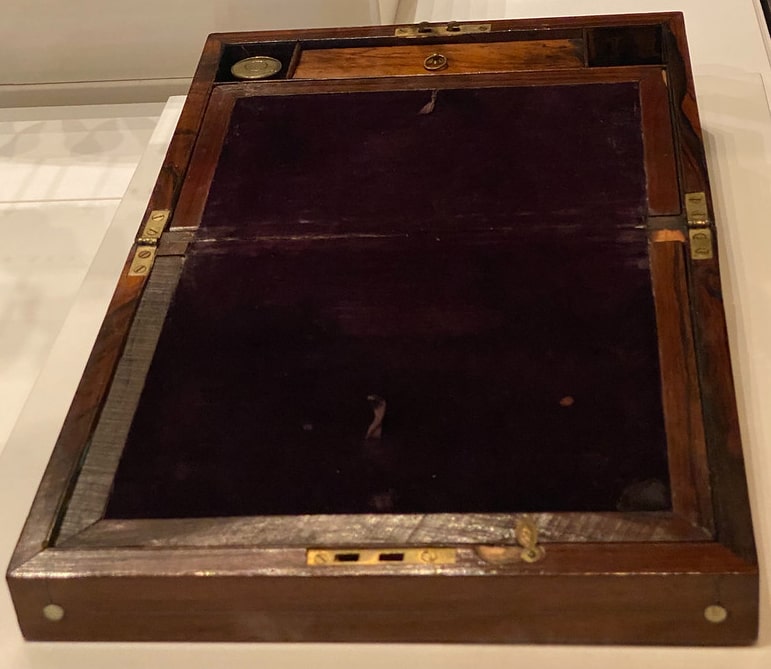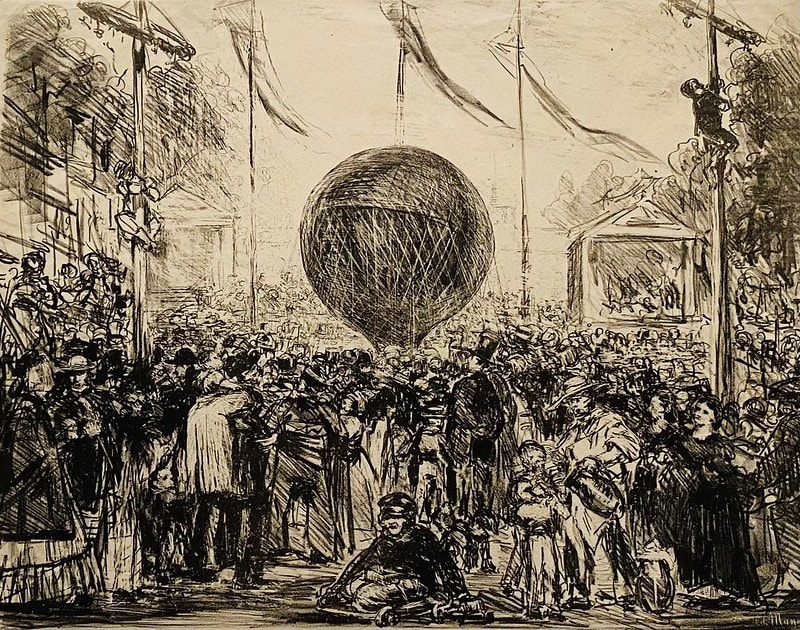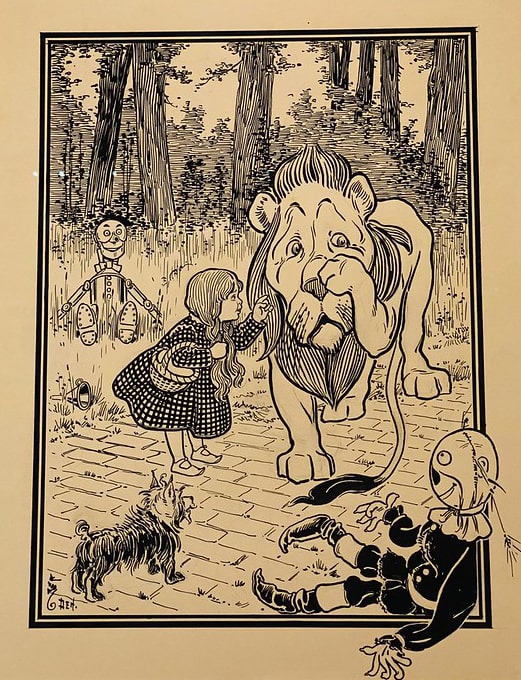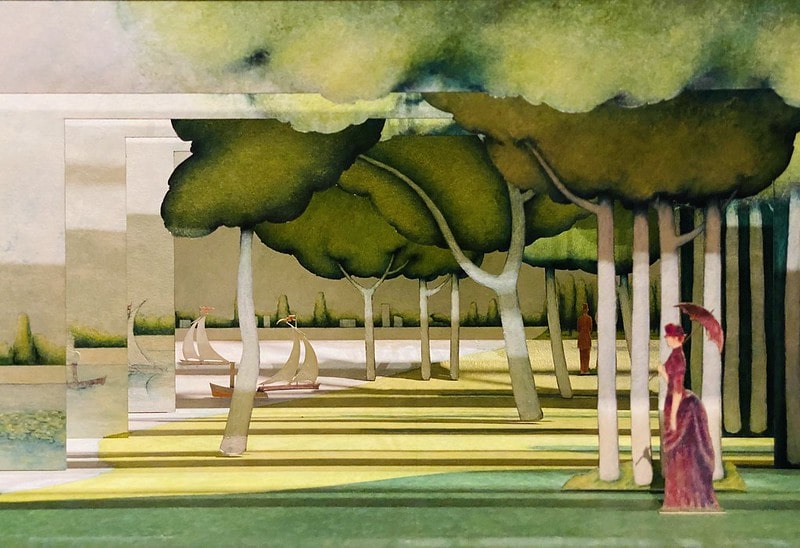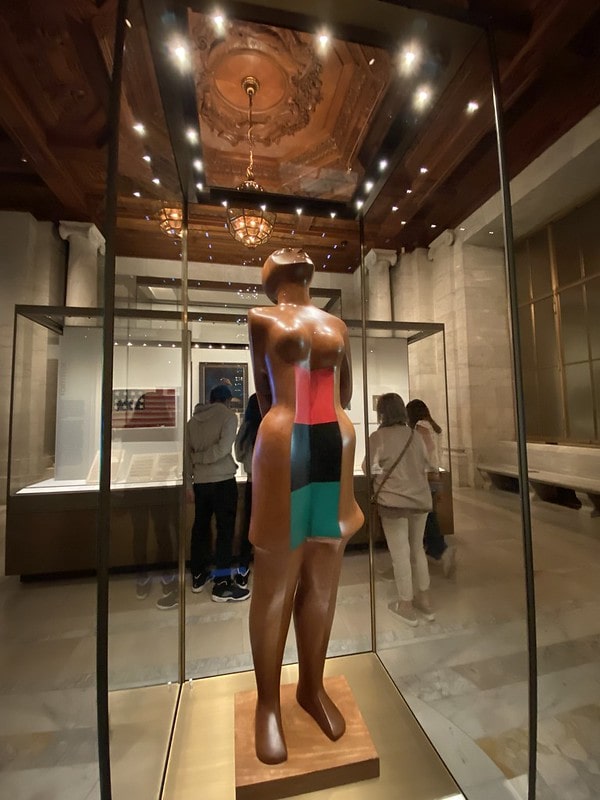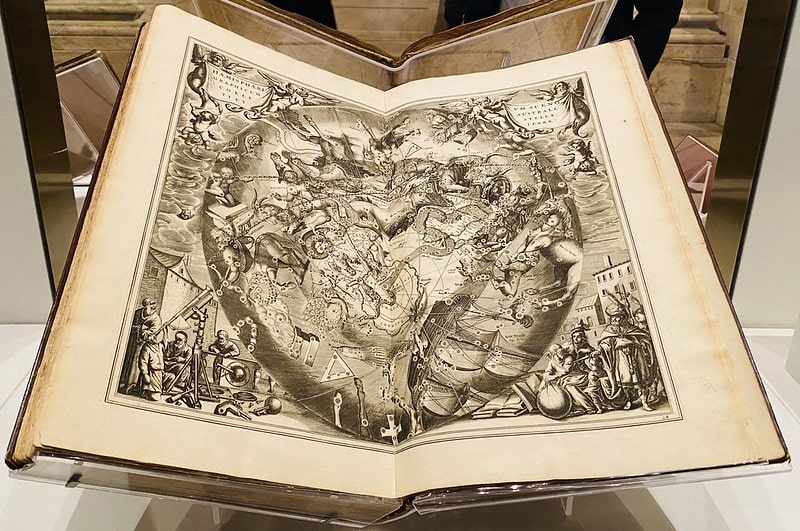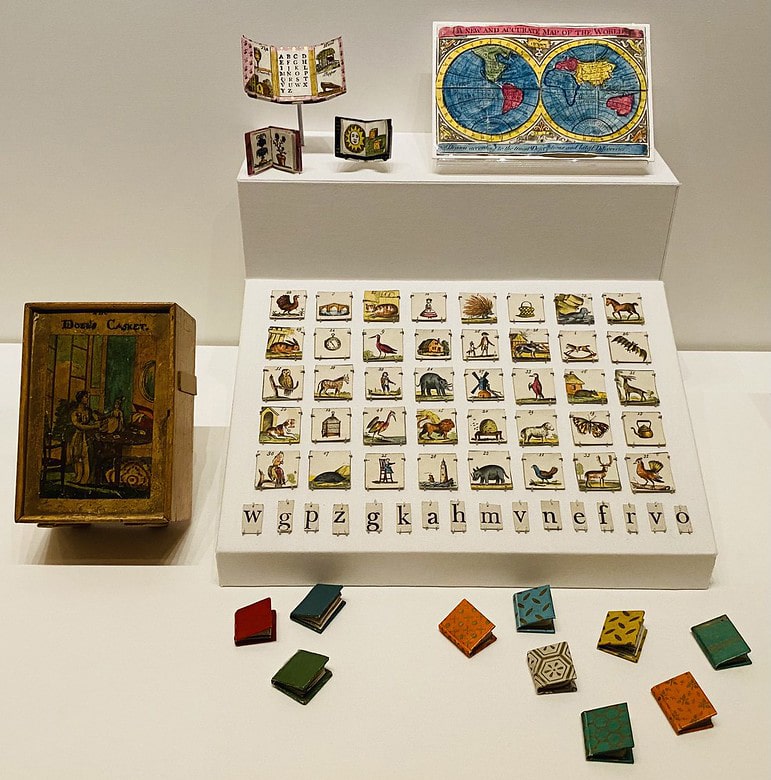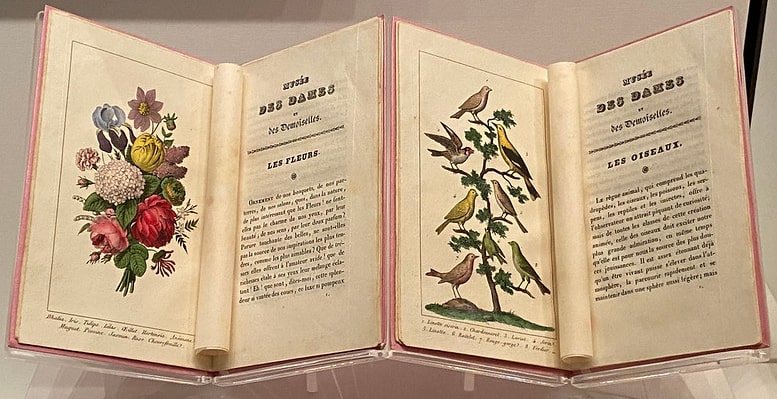|
The New York Public Library Treasures is a showcase of rare items from the library’s collections and hidden treasures from the archives are revealed.
The New York Public Library has over 46 million items in its research collections, including rare books, manuscripts, prints, photographs, and ephemera. The New York Public Library Treasures exhibit features more than 250 of these cultural and historic objects.
In this free exhibit at the New York Public Library, some treasures are displayed for an extended period of time, while others are returned to the archives and replaced with new items. The New York Public Library Treasures exhibition is categorized into 9 themes:
Here are 12 favorites from the New York Public Library Treasures:
1. From Alice’s Adventures in Wonderland, “The Rabbit scurried away into the darkness” and “The Queen’s Croquet-Ground” (John Tenniel, 1820-1914). Graphite on paper.
To publish Alice’s Adventures in Wonderland in 1865, the author, Lewis Carroll, commissioned the famed illustrator John Tenniel to create the drawings.
After the book’s success, Tenniel would draw copies of his published illustrations for collectors. In these two copies, the White Rabbit drops a fan, and Alice tries to play croquet with a flamingo for a mallet and a hedgehog for a ball. 2. Cinderella book cover design (Arthur Rackham, 1919). Pen and ink with watercolor.
Arthur Rackham (1867-1939) is considered one of the finest British book illustrators.
Notable works illustrated by Arthur Rackham include Fairy Tales of the Brothers Grimm (1909); Gulliver’s Travels (1909); Aesop’s Fables (1912); Mother Goose: The Old Nursery Rhymes (1913); A Christmas Carol (1915); The Sleeping Beauty (1920); and Fairy Tales by Hans Christian Andersen (1932). For Cinderella (1919), Rackham created black silhouettes similar to folk art paper cuttings. 3. Winnie-the-Pooh and Friends (circa 1921).
For his first birthday in 1921, Christopher Robin Milne received a teddy bear. In time, Winnie-the-Pooh was joined by Eeyore, Piglet, Kanga, Tigger, and Roo (later, Roo was lost in an apple orchard).
These toys inspired Christopher Robin’s father, A.A. Milne, to create classic stories, including Winnie-the-Pooh (1926) and The House at Pooh Corner (1928). In 1947, these toys were brought to the United States where they remained with Milne’s American publisher, E.P. Dutton, until 1987, when they were donated to the New York Public Library. 4. Charlotte Brontë’s writing desk (before 1855).
This travel writing desk belonged to Charlotte Brontë (1816-1855), who is best-known for her 1847 novel Jane Eyre.
Made with wood, mother of pearl, metal, and velvet, this portable desk has compartments for paper, ink, pens, and spare pen nibs. Donated to the New York Public Library in 1940, the desk was unlocked for the first time in 1973, and contained keepsakes, such as a lock of Charlotte Brontë’s hair. Charlotte Brontë’s desk is part of The Berg Collection of English and American Literature which includes over 35,000 works from 400 individual authors. This collection at the New York Public Library began with a donation from Albert Berg in memory of his brother, Henry. The Berg Collection also includes the writing desk of Charles Dickens. 5. The Balloon (Édouard Manet, 1862). Lithograph.
This 1862 artwork was considered too radical for its time because of its abstraction.
Édouard Manet (1832–1883) created the lithograph showing crowds of Parisians enjoying balloon rides as part of celebrating Napoleon Bonaparte’s birthday. This rare print is one of only five impressions. 6. From The Wonderful Wizard of Oz, “You ought to be ashamed of yourself!” (W.W. Denslow, 1900). Pen and ink drawing.
William Wallace Denslow (1856-1919) created the illustrations for L. Frank Baum’s The Wonderful Wizard of Oz which was first published in 1900.
In this scene, Dorothy, chastises the Cowardly Lion for frightening her companions, the Tin Woodman, Toto, and the Scarecrow. (See a review of my favorite illustrated version of The Wonderful Wizard of Oz.) 7. Broadway set model for Sunday in the Park with George (Tony Straiges, 1984).
Sunday in the Park with George is a 1984 Stephen Sondheim musical inspired by Georges Seurat’s most famous work painted from 1884-1886, A Sunday Afternoon on the Island of La Grande Jatte.
The painting is brought to life on stage through Straiges’ Tony Award-winning scenic design. 8. Political Prisoner (Elizabeth Catlett, 1971). Polychromed cedar sculpture.
Elizabeth Catlett (1915–2012) is renowned as a sculptor and printmaker. Catlett uses her art to bring about social and political change.
In addition to depicting famous figures such as Malcolm X, Catlett portrays anonymous individuals like this woman. The Political Prisoner is bound by cuffs behind her back. 9. Harmonia Macrocosmica (Andreas Cellarius, circa 1596-1665).
This celestial atlas was published in The Netherlands in 1660 and contains more than 400 pages of text. The double-folio pages are nearly 13 inches high and the book opens to 40 inches wide.
Using the Baroque style, Harmonia Macrocosmica illustrates the movements of the sun, moon, and planets, including biblical and classical constellations. In 2008, Christie’s auction house sold a Harmonia Macrocosmica celestial atlas for $266,500. 10. The Doll’s Casket (John Marshall, circa 1810).
This 1810 “casket” (an archaic word for a box or chest) contains tiny picture books and hand-colored illustrations.
While common in the 18th and 19th centuries, most caskets like this have not survived, and the many delicate pieces have been lost or destroyed. 11. “Peep Show” (T. Brown, 1825, London).
This novelty known as a “peep show” is created with painted accordion-folded sheets that give the illusion of depth.
The view is of the Thames Tunnel, a tunnel that runs under the River Thames in London. The Thames Tunnel was originally designed for horse-drawn carriages, then used by pedestrians, before being converted into a railway tunnel in 1869. 12. Musée des Dames et des Demoiselles (Chez Marcilly Ainé, 1825, Paris).
During the 19th century, the study of natural science was popular with the middle classes of Europe and America.
The complete set of six volumes (the title translates to Museum of Women and Girls) were printed specifically for young women and girls in France. These brilliant hand-colored plates illustrate the collecting, cataloging, and arranging of natural specimens such as flowers, fruits, birds, and butterflies.
The New York Public Library Treasures exhibit is officially known as The Polonsky Exhibition of the New York Public Library’s Treasures. This first permanent exhibition at the New York Public Library is supported by a $12.5 million donation from philanthropist, Dr. Leonard Polonsky CBE (Commander of the Order of the British Empire) and The Polonsky Foundation. The New York Public Library Treasures exhibit is located at the flagship building in the New York Public Library system (commonly known as the Main Branch) in Midtown Manhattan, only a one-minute walk from Bryant Park. New York Public Library (Main Branch): 476 Fifth Avenue, New York; Tel: 917-275-6975. For this free exhibit, you must reserve timed admission tickets. Plan your visit to see the New York Public Library Treasures. Comments are closed.
|
Fold GentlyPlaces unexpected. Bakes for home bakers. Books overlooked. Find your new favorite thing. |


